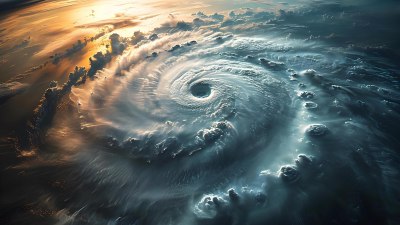What Happens Inside a Superheated Sandstorm
Explore the fascinating processes and impacts of superheated sandstorms on the environment and human health.

Superheated sandstorms are one of nature's most extreme phenomena, characterized by rising temperatures, swirling winds, and an intense movement of sand particles. These storms typically occur in arid and semi-arid regions where vast stretches of sand are exposed to the elements. Understanding what happens inside a superheated sandstorm is crucial for anticipating its effects on both the environment and human activity.
The Formation of Superheated Sandstorms
Superheated sandstorms often form in conditions where there's a combination of high temperatures, low humidity, and strong winds. The sun heats the land surface intensely, especially in desert areas, leading to the rapid evaporation of moisture. This process can generate significant thermal updrafts that lift sand particles into the atmosphere, creating a storm. Moreover, the heated air can rise to considerable altitudes, carrying with it dust and smaller sand particles, which can travel for miles.
Characteristics of Superheated Sandstorms
One of the primary characteristics of a superheated sandstorm is its temperature. As the storm progresses, the temperature can increase significantly, driven by the intense solar radiation absorbed by the sand. The rising air creates a low-pressure system that draws in surrounding air, enhancing the wind speeds. These winds can exceed 60 miles per hour, resulting in a chaotic environment where visibility is severely reduced due to the suspended particles.
Visual and Sensory Impact
Visually, superheated sandstorms can appear almost surreal. The sky may take on ominous hues—pale orange, deep brown, or even dark gray—depending on the amount and type of particles suspended in the air. The sensation during a sandstorm is equally striking; the dry, hot air can feel oppressive, and the gritty sensation of sand on the skin and in the eyes makes it uncomfortable to be outdoors. The sound is distinctive as well, a tumultuous roar created by the wind and swirling particles.
Environmental Effects
Superheated sandstorms can have significant environmental effects. As the sand and dust are lifted into the atmosphere, they can be deposited far from their source, altering landscapes and ecosystems. This can lead to the depletion of topsoil in the areas where the sand is stripped away, making it difficult for vegetation to thrive. In addition, the airborne particles can contribute to air quality deterioration in regions far downwind, impacting health and visibility.
Impact on Human Health
The health risks associated with superheated sandstorms are considerable. Inhalation of fine dust particles can lead to respiratory issues, exacerbating conditions such as asthma and bronchitis. These storms can also cause skin abrasions and eye irritation. In extreme cases, people caught in the storm may experience more severe health complications due to the extreme heat combined with physical exertion if they are trying to navigate through the storm.
Impact on Infrastructure
Infrastructure can face substantial challenges during superheated sandstorms. Visibility can drop to nearly zero, creating hazardous conditions for transportation systems, including roads, railways, and even airports. The accumulation of sand on roads can also cause significant disruption, leading to accidents or blockage of pathways. Buildings and equipment may suffer from erosion and damage due to the abrasive nature of the sand.
Adapting to Superheated Sandstorms
To mitigate the dangers posed by superheated sandstorms, various adaptation strategies can be employed. Urban planning in arid areas can incorporate windbreaks—such as trees or built structures—that help deflect winds and trap sand. Communities can also invest in protective infrastructure, such as elevated roads, to minimize disruption during severe storms. Moreover, public awareness campaigns can educate residents about preparedness, including staying indoors during storms and avoiding outdoor activities.
The Future of Superheated Sandstorms
As the climate continues to change, scientists predict that the frequency and intensity of superheated sandstorms may increase. Rising temperatures can exacerbate conditions conducive to these storms, creating a cycle that could lead to more severe weather events. Understanding the dynamics of sandstorms will become increasingly important as we look for ways to adapt to the challenges posed by a warming world.
Research and Monitoring
Ongoing research into superheated sandstorms aims to better predict when and where these events will occur. Satellite technology, remote sensing, and ground-based sensors are employed to monitor dust patterns and atmospheric changes. This data can help scientists understand the underlying processes of sandstorm formation and improve models that predict their occurrence, allowing for better warnings and preparations for affected communities.
Global Implications
Globally, the effects of superheated sandstorms extend beyond localized impacts. The dust released into the atmosphere can influence weather patterns around the world, including precipitation patterns. Some studies have indicated that Saharan dust, for instance, can fertilize the Amazon rainforest by providing essential nutrients that are otherwise deficient in the soil. However, this also demonstrates the interconnectedness of Earth’s systems, where changes in one region can have ramifications far away.
In conclusion, superheated sandstorms are a complex interplay of environmental elements that create a challenging and often dangerous phenomena. Understanding the formation, characteristics, impacts, and responses to these storms is essential, especially in the context of a changing climate. Enhanced awareness and preparedness can mitigate risks, while continued research offers the promise of improved prediction models and response strategies.











